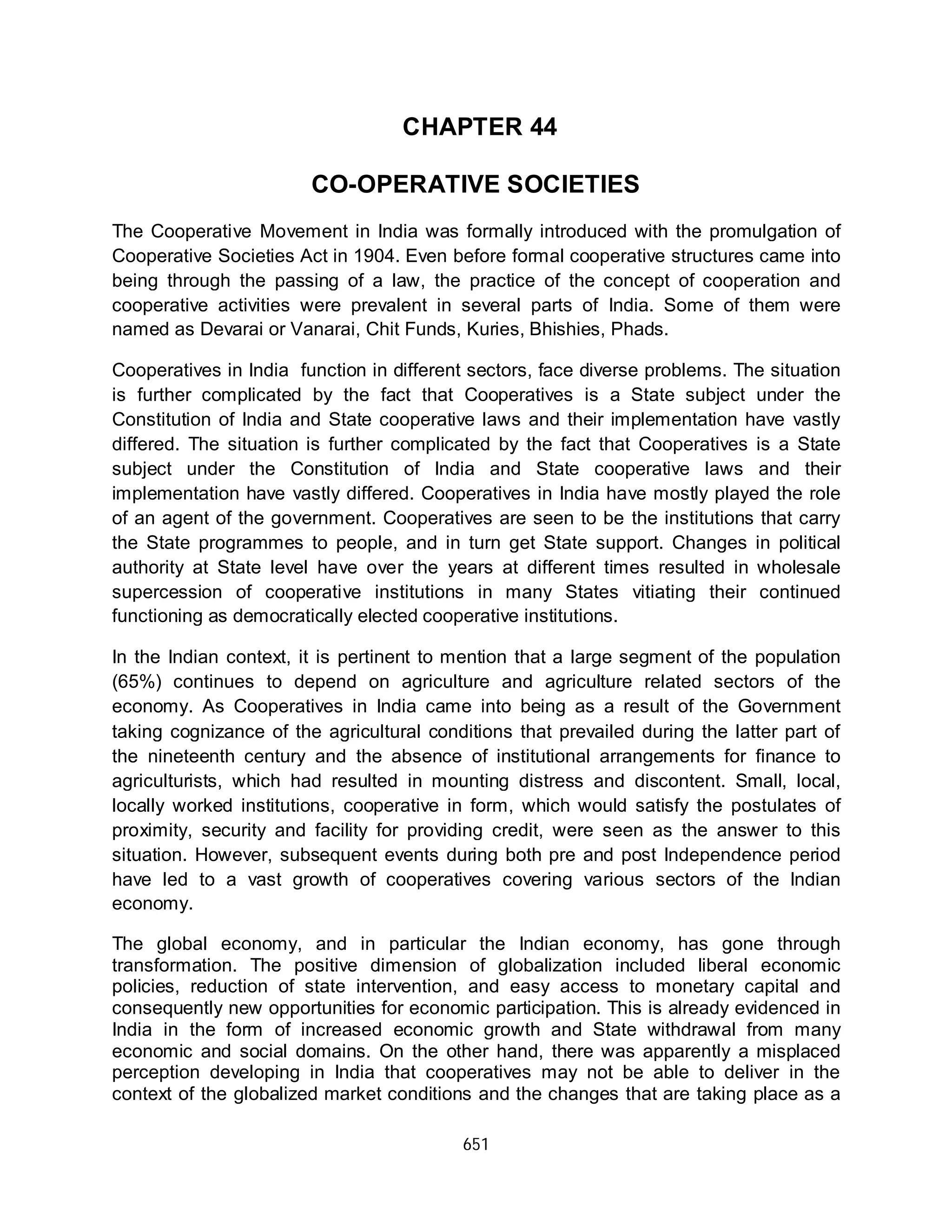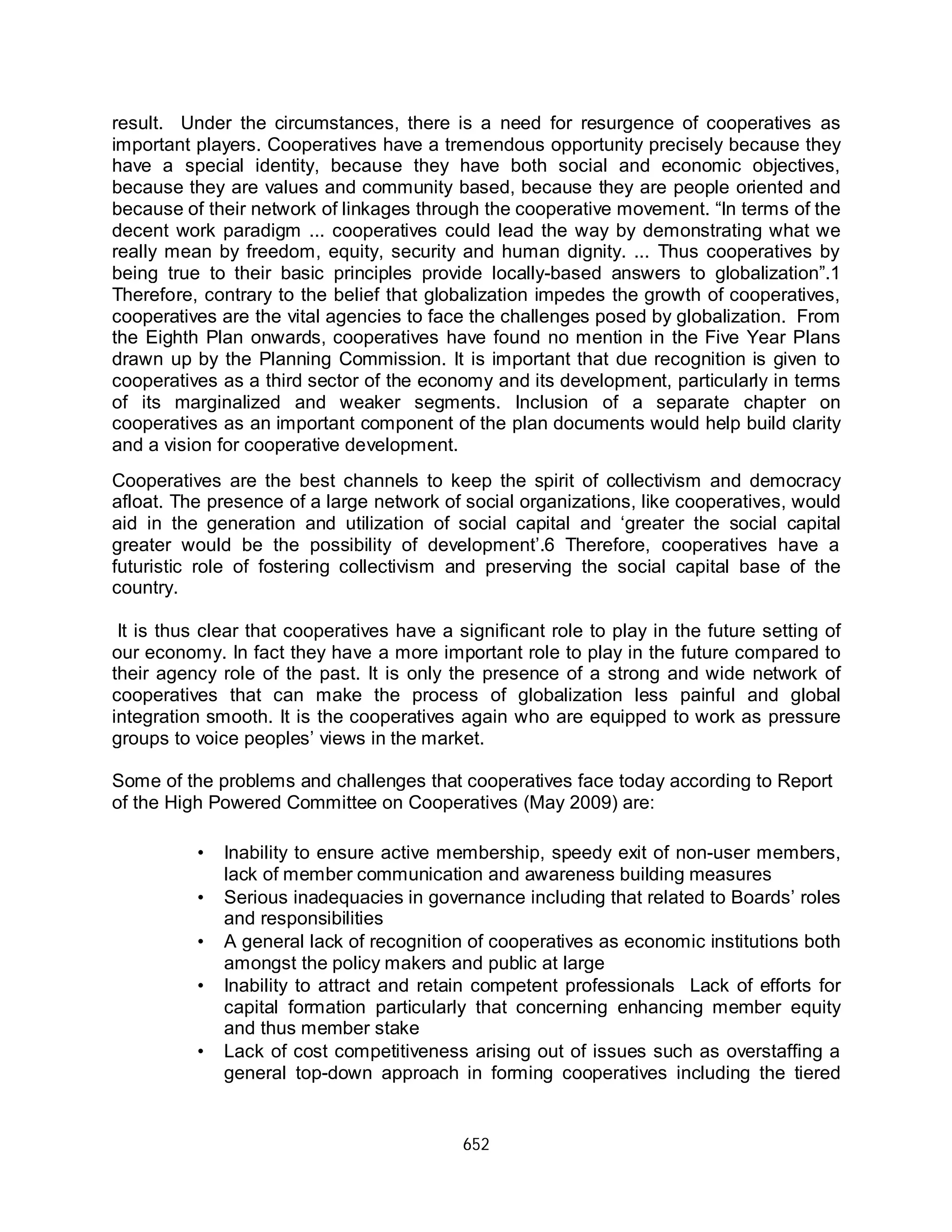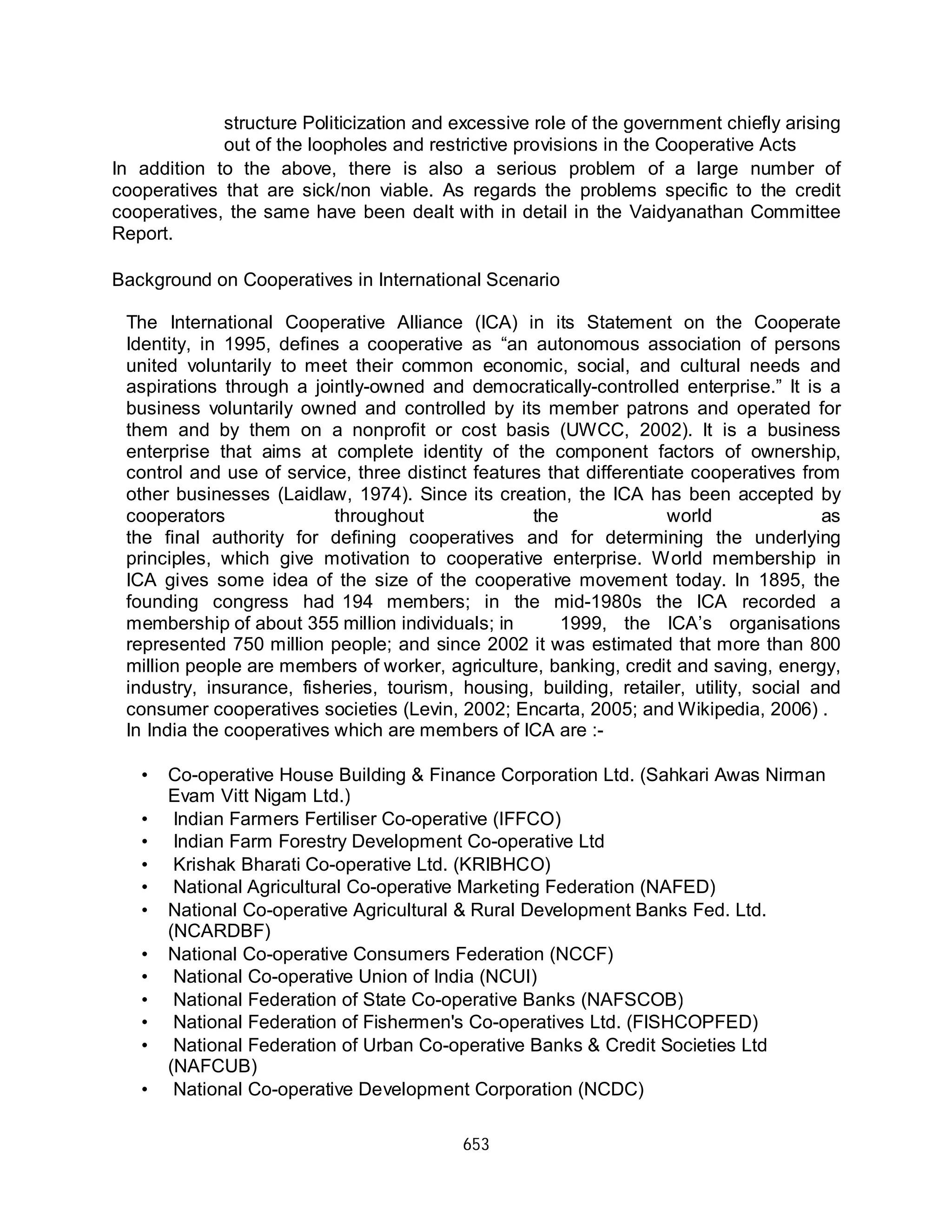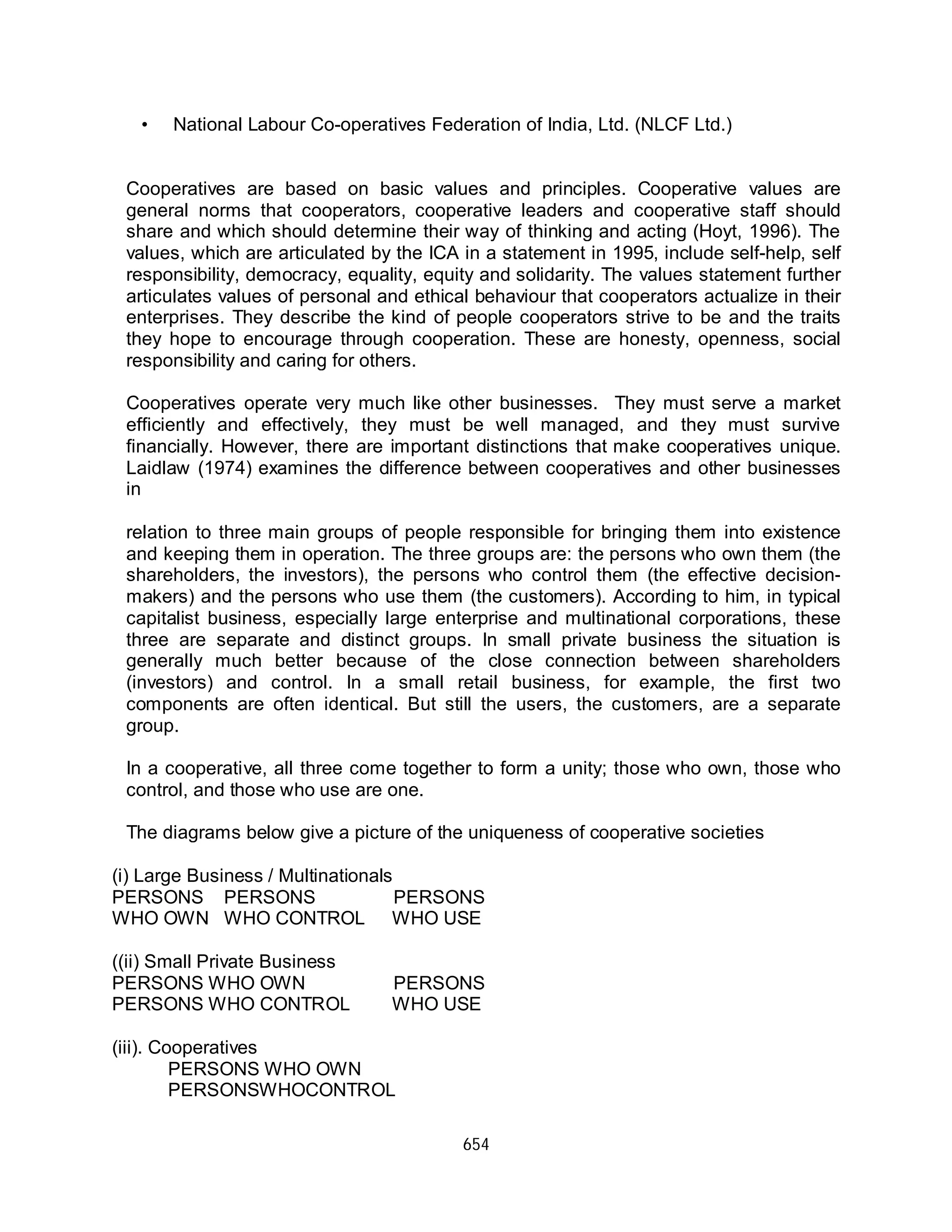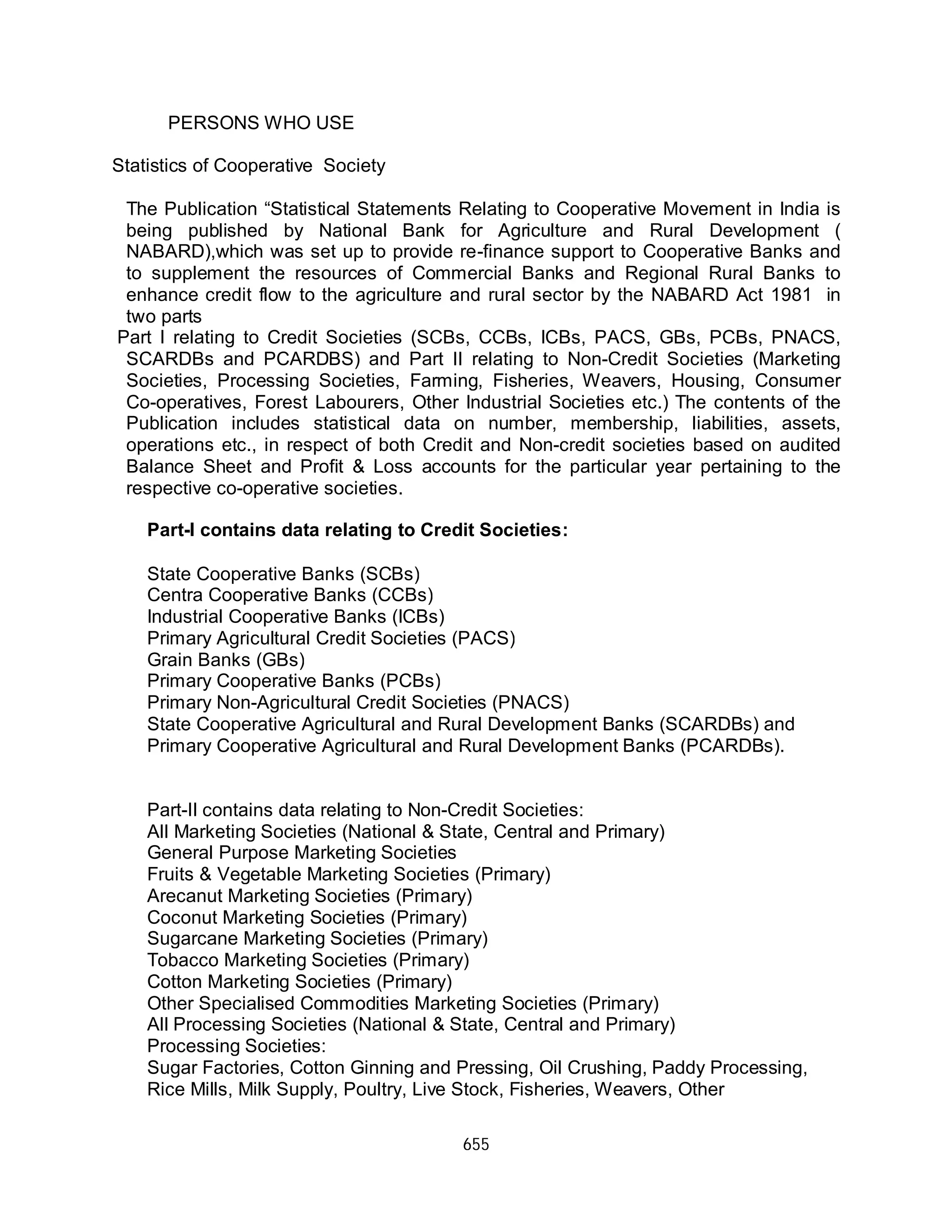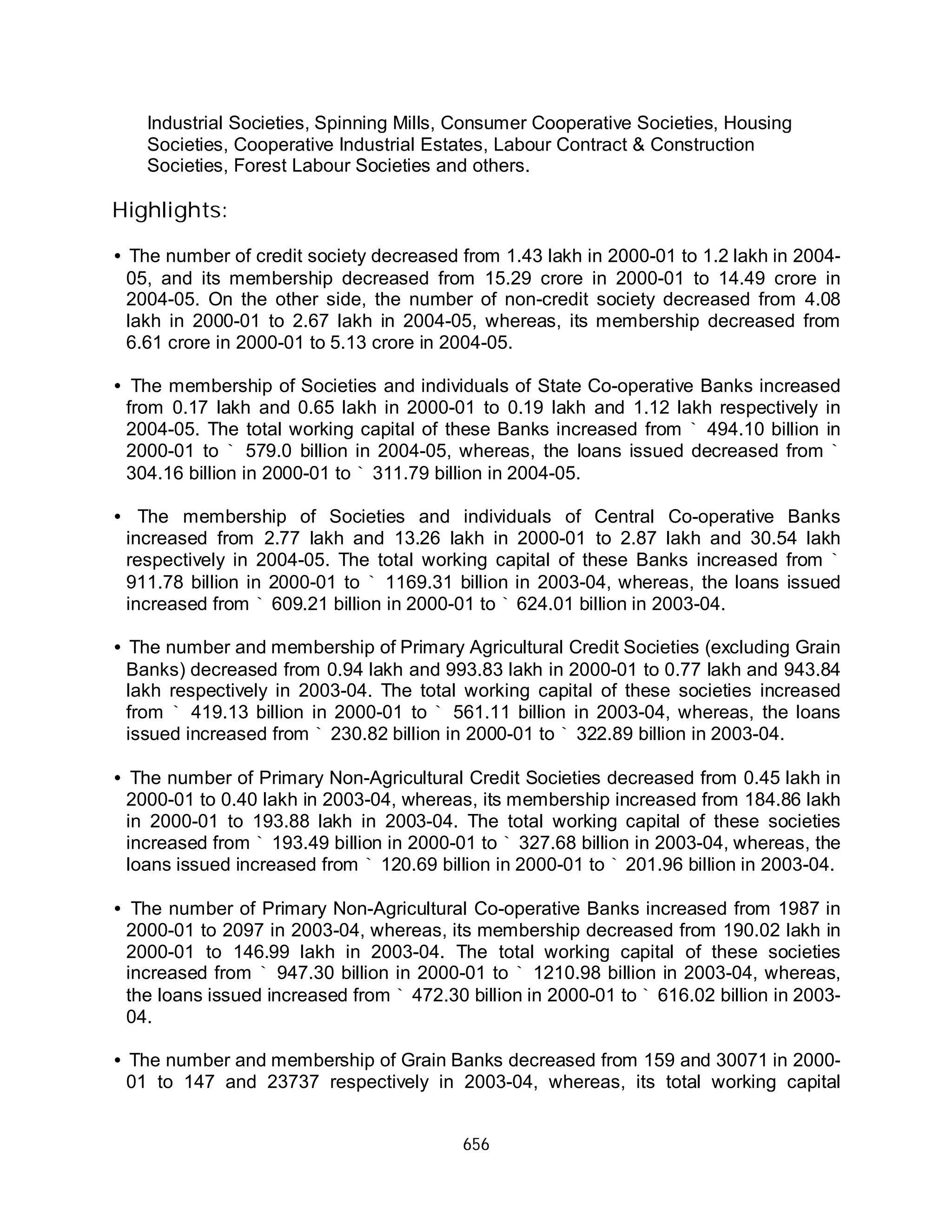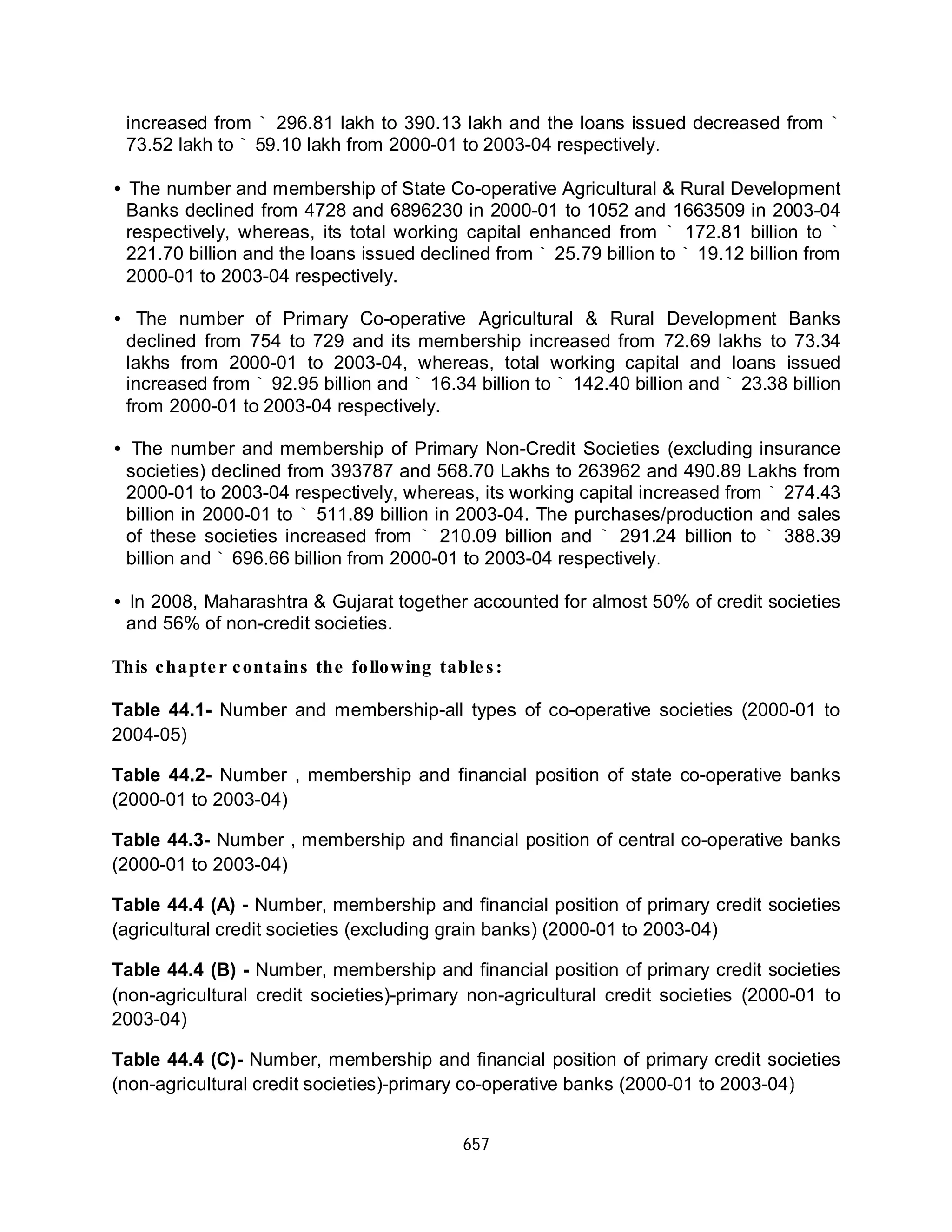Cooperatives have historically played an important role in India, first being formally established in 1904 to help farmers and agricultural workers access credit. Cooperatives operate across many sectors but face various challenges due to differing state-level laws and implementation. Additionally, political changes have undermined some cooperatives' independence. However, cooperatives still have an important role to play in supporting communities and addressing issues caused by globalization through locally-based solutions and acting as advocates for citizens' interests in markets.
